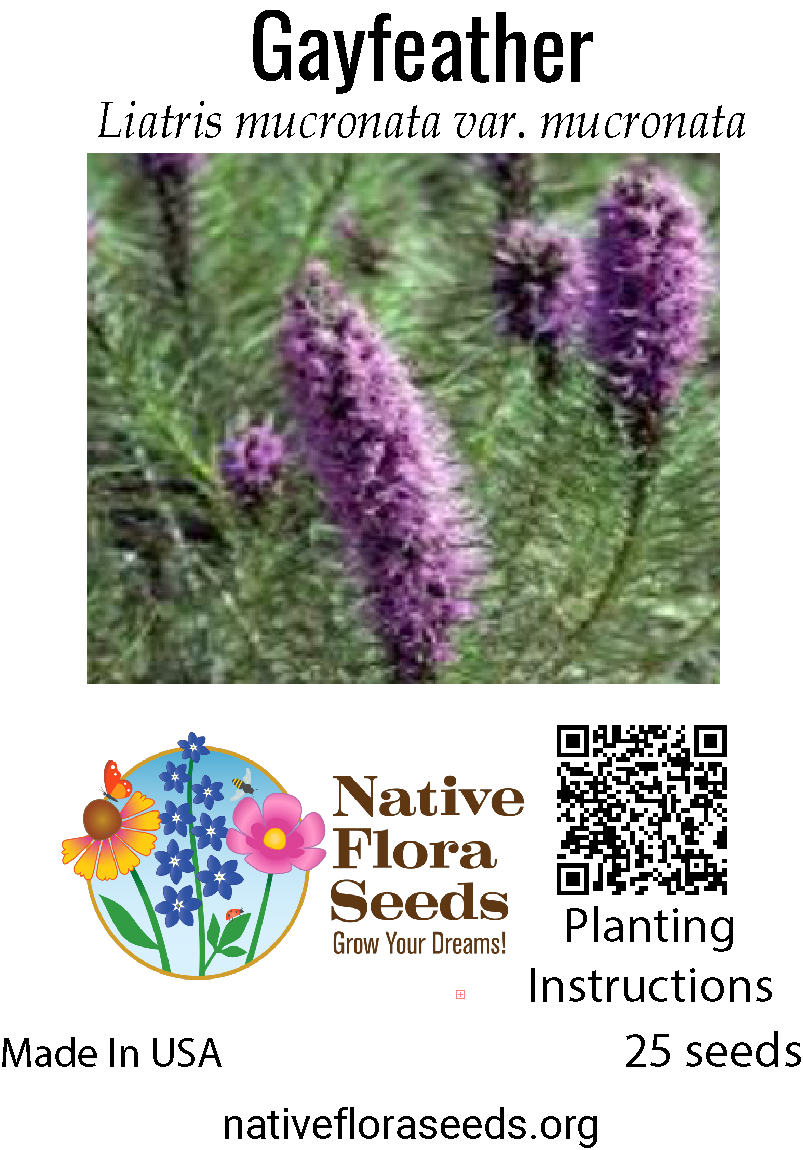Gayfeather Narrow Leaf
Planting Instructions
🌿 Overview of Liatris mucronata (Cusp Gayfeather / Dense Blazing Star)
Native Range: South-central U.S., especially Texas and surrounding regions
Life Cycle: Perennial
Height: 2–4 feet
Bloom Time: Late summer to early fall
Ecological Value: High value for bees, butterflies (especially Monarchs), and other pollinators
Growth Habit: Upright, clumping; forms corms
🌱 Sowing Options
1️⃣ Direct Sowing Outdoors
Best Time to Sow:
Fall (ideal): Seeds benefit from natural cold stratification.
Early Spring: Requires cold stratification beforehand (see below).
Site Selection:
Sunlight: Full sun is essential (6–8+ hours/day).
Soil: Prefers well-drained sandy or loamy soil, but tolerates rocky or clay soils if not waterlogged.
Soil pH: Slightly acidic to neutral (6.0–7.0)
Soil Preparation:
Loosen soil to a depth of 6–8 inches.
Remove weeds and debris.
Avoid overly rich soil—lean soil promotes sturdier plants and better blooms.
Planting Depth:
Surface sow or cover very lightly (1/16 to 1/8 inch max).
Seeds need light to germinate.
Watering:
Water lightly after sowing.
Keep soil evenly moist until germination (may take 2–4 weeks, longer without stratification).
Once established, plants are very drought-tolerant.
Stratification:
Yes — Cold-moist stratification improves germination.
Recommended: 30–60 days in moist sand/peat in refrigerator.
Fall sowing satisfies this naturally.
For spring sowing, stratify seeds ahead of time.
Scarification:
Not required.
2️⃣ Starting Seeds Indoors (Spring Transplanting)
When to Start:
Begin stratification 8–10 weeks before last frost date.
Sow indoors 4–6 weeks before last frost, after stratification.
Growing Setup:
Use deep pots or cells to accommodate long roots/corm formation.
Surface sow or lightly press seeds into soil.
Provide bright light (12–16 hrs/day) using grow lights or a sunny window.
Maintain temperature around 65–75°F.
Watering Indoors:
Keep soil lightly moist — mist or bottom water.
Avoid oversaturation.
Transplanting Outdoors:
Harden off for 7–10 days before transplanting.
Transplant after last frost into full sun.
Space plants 12–18 inches apart.
🔧 Maintenance Tips
Very low-maintenance once established.
Drought-tolerant, no fertilization needed.
Deadhead to promote extended bloom or allow seedheads to dry for reseeding.
Cut back stems in late fall or early spring.
Plants will slowly form clumps of corms over time—divide every few years if desired.
Great for xeriscaping, prairie gardens, pollinator meadows, and borders.
🚫 Invasiveness
Not considered invasive.
Spreads slowly by seed and corm division; does not aggressively displace other natives.
Can be controlled easily in managed garden settings.



